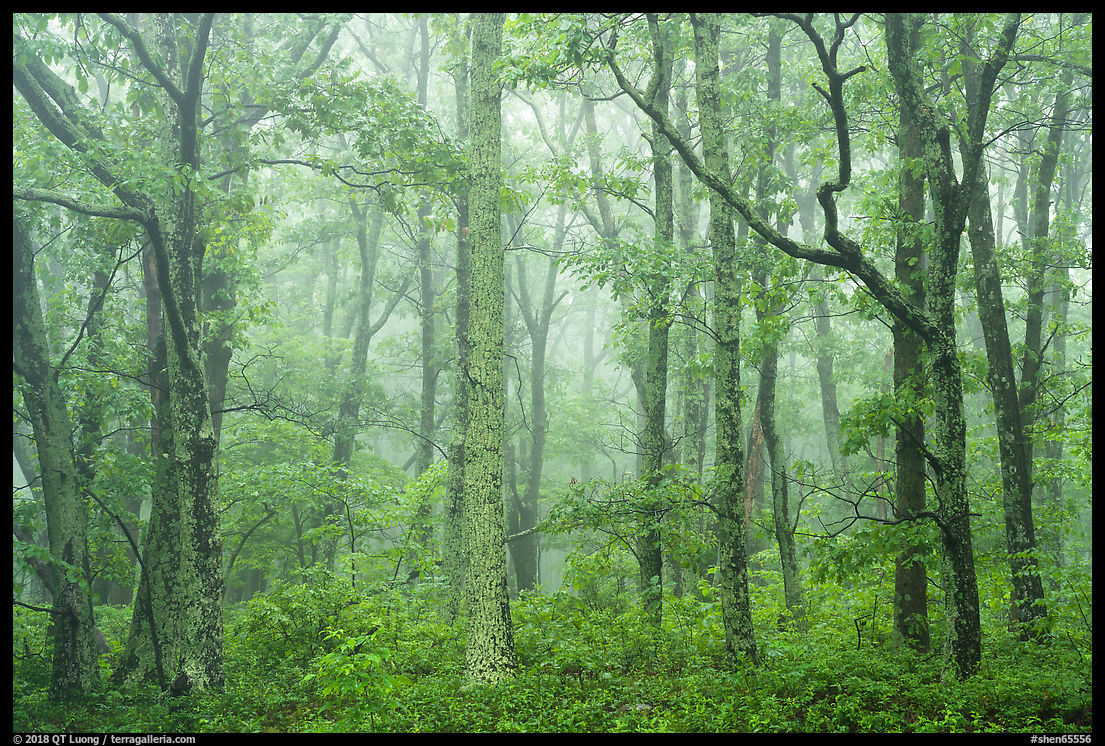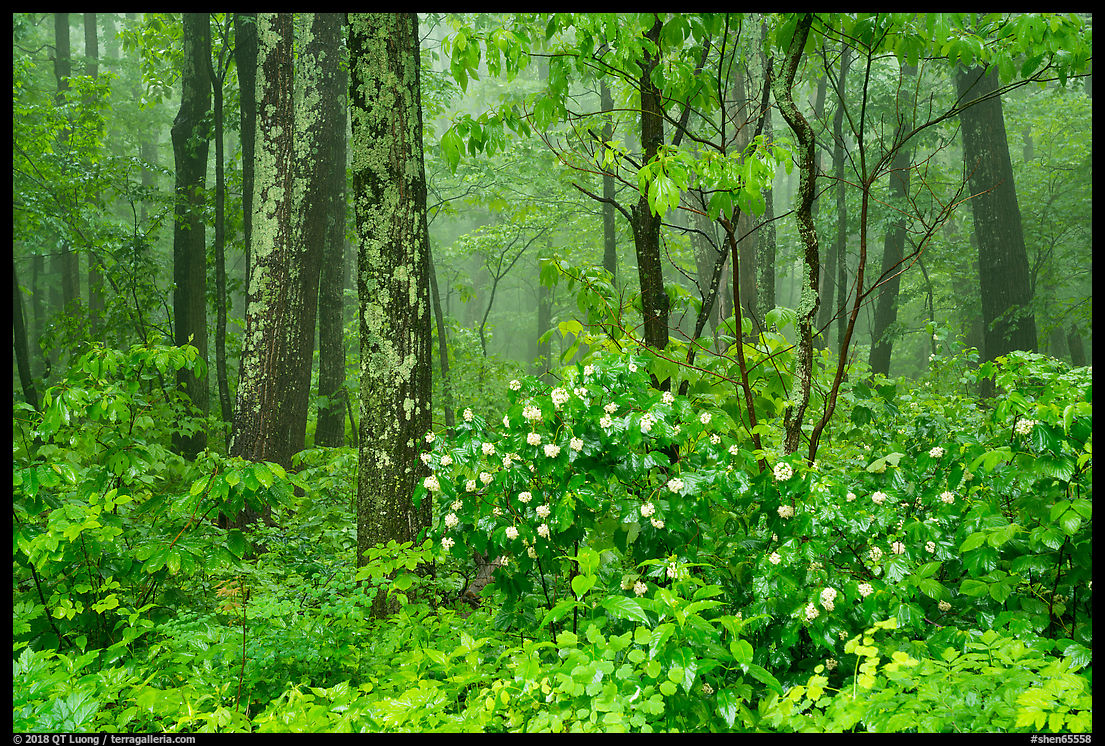Utilizing Weather in Shenandoah
5 Comments
I have found the adage “Bad weather makes for good photographs” generally true. Cloudless days are not what I look forward to for daytime photography. There are two approaches to finding favorable weather conditions for landscape photography. You can go to a location based specifically on the weather forecast – the best is little-known Meteoblue because it includes cloud cover at different altitudes. Instead of looking for weather, you can wait for it. I somehow used both approaches on the same day in Shenandoah National Park.

I’ve heard some photographers and workshop leaders drive hundreds of miles in a day to place themselves at a scene with “epic” light for a sunset. I am not a big fan of that approach. When I am out in nature, the experience of enjoying the environment is paramount. Spending hours rushing in a car is not a way to do it. Although I admire those epic pictures, I feel that there is more to nature than that, and I’d be missing a chance to make those discoveries if I was focussed only on getting the epic, pre-conceived, picture. Rather, my approach in looking for weather is to make smaller adjustments to my itinerary based on weather conditions, as well as looking for subjects appropriate for the weather.

The day had started sunny, but as I drove down the Skyline Drive in Shenandoah National Park and the road climbed to higher elevations, clouds started to roll in, obscuring views. I abandoned my plans for a long hike to a mountaintop, switching my interest to the forest. I love the depth and atmosphere that fog brings in any forest, and the thicker, the better.

Any place in the park is a good starting point to explore the forest. Whenever I encountered a section of dense fog along the drive, I would look for the nearest pullout or trailhead. Opposite the Little Hogback Overlook, beautiful ferns cover the ground, and so do they along the section of the Appalachian Trail accessible from the Hogback Overlook. When the fog started to dissipate, I’d go back to the car, and then keep driving until another area of dense fog.

By the time I arrived at Big Meadows, the rain was quite heavy. Rainy weather is excellent for photographing in the forest, but having photographed in rain with the benefit of fog earlier in the day, I didn’t feel like venturing in the downpour. I went to the Big Meadows Lodge for a picture of the inside. There, I found a cellular signal, which allowed me to figure out that the rain might stop. If the weather was to break, Big Meadows was a good place to be as, like the name implies, it is only one of the large open areas in the park. It is not a natural meadow but rather was cleared by the early settlers who were evicted to make room for the national park. While most of the park has been allowed to revert to a wild state, the NPS has chosen to maintain Big Meadows in its historic condition. Hawksbill, highest peak in the park, wasn’t too far, but the sound of thunder made it clear hiking high would be too risky of a proposition. I hung around and got out when the rain started to subside, and almost like on cue, the rainbow appeared just before sunset time.




QT — Right on! There is so much more to landscape photography than the epic golden hour images. Thank you for another fine post. Well done, as usual! Frank
Great post QT and such lovely images.
Great reminder that enjoying what is available is better than driving hours for a “possible” sunset! Great post again.
Thoughts well expressed with beautiful images to illustrate. A lesson for a lifetime in photography.
All weather is wonderful. Follow the light…
Thank you Frank, Richard, Karl, and Benkel.